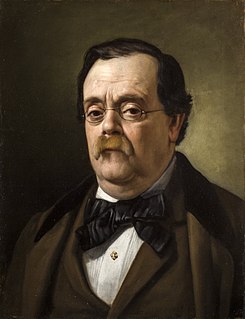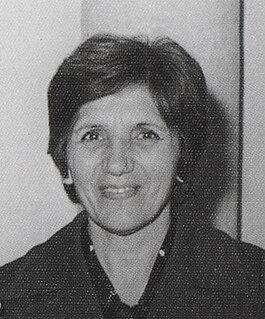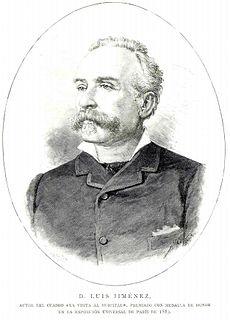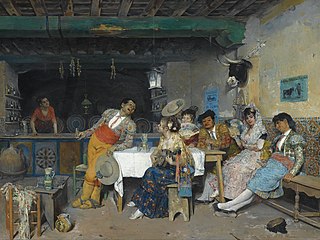
Manuel Cabral Aguado-Bejarano (1827, Seville - 1891, Seville) was a Spanish painter in the Romantic style; best known for his Costumbrismo scenes.

Manuel Cabral Aguado-Bejarano (1827, Seville - 1891, Seville) was a Spanish painter in the Romantic style; best known for his Costumbrismo scenes.
He was the son of the painter, Antonio Cabral Bejarano. He actually began his studies with José Domínguez Bécquer and only later took lessons from his father. In 1845, he enrolled at what is now the Real Academia de Bellas Artes de Santa Isabel de Hungría in Seville. After graduating, he was named an honorary "Painter to the Queen" (Isabel II). Many years later, he became a Professor there.
He received honorary mention at the Exposiciones Nacionales de Bellas Artes in 1858, 1864, 1879 and 1880, (in Cádiz), and in 1856, 1858, 1867 and 1878 in Seville. His great attention to the fine details of dress, architecture and everyday objects makes his paintings of significant documentary value.
Although he is most familiar as a painter of genre scenes, he also produced many portraits; notably those for the French Ducal family of Montpensier, for whom he worked in 1877, and the actors, Teodora Lamadrid (dressed in her role of Adriana Lecouvreur ) and Julián Romea (dressed as Sullivan ). The latter works may be seen at the Museo del Romanticismo in Madrid. Other important examples of his work may be found at the Carmen Thyssen Museum in Málaga. [1] [2]
By the time of his death, his works had come to be considered old-fashioned.

Seville is the capital and largest city of the Spanish autonomous community of Andalusia and the province of Seville. It is situated on the lower reaches of the River Guadalquivir, in the southwest of the Iberian Peninsula.

Evaristo Márquez Contreras was a Spanish sculptor.

Bernardo Germán de Llórente was a Spanish painter of the late-Baroque period. He was active in Seville where he was one of the followers of Murillo and made a name with his devotional paintings of the Virgin Mary. He also painted portraits and still lifes with trompe-l'œil effects.

Manuel García y Rodríguez was a Spanish costumbrista and landscape painter, who also painted Orientalist scenes.

The Palace of San Telmo is a historical edifice in Seville, southern Spain, formerly the Universidad de Mareantes, now is the seat of the presidency of the Andalusian Autonomous Government. Construction of the building began in 1682 outside the walls of the city, on property belonging to the Tribunal of the Holy Office, the institution responsible for the Spanish Inquisition. It was originally constructed as the seat of the University of Navigators, a school to educate orphaned children and train them as sailors.

The Museum of Romanticism is a State-owned art museum located in Madrid, Spain. It was inaugurated in 1924 as Museo Romántico.

José Jiménez Aranda was a Spanish painter and brother of the painters Luis Jiménez Aranda and Manuel Jiménez Aranda.

Enrique Enríquez the Elder was a nobleman of Castile, natural son of the Infante Henry of Castile. He was Lord of La Puebla de los Infantes. His son, Enrique Enríquez the Younger, had a distinguished career serving kings Alfonso XI of Castile and Peter of Castile.
Ángel María Cortellini Hernández was a Spanish painter. He received the gold medal of the National Exhibition for his painting, Retrato de señora.

Antonio Cabral Bejarano was a Spanish painter, considered to be an adherent of both the Europe-wide Romantic painting and the specifically Hispanic painting school of Costumbrismo. His ancestors for several earlier generations were painters, and he was initially trained by his father. He was mainly active in his native city of Seville, getting many commissions from its municipal government. He was the first Director of the Museum of Fine Arts of Seville.
Andres Rossi was a Spanish artist. He worked as a painter, draughtsman, print maker, sculptor and writer in Madrid and Seville.

Carmen Jiménez Serrano was a Spanish painter, sculptor, and professor.

Luis Jiménez Aranda was a Spanish-born French painter of genre scenes; many in costumbrista style. His brothers, José and Manuel also became painters.

Joaquín Domínguez Bécquer was a Spanish Costumbrista painter.

Manuel García Hispaleto, originally Manuel García y Martínez was a Spanish painter; known for portraits and costumbrista scenes. His brother, Rafael García Hispaleto, was also a painter. Many sources refer to him as Manuel García y García, but his mother's maiden name appears to have been Martínez.

José García Ramos was a Spanish painter and illustrator; known primarily for his costumbrista scenes.

Francisco Peralta del Campo was a Spanish painter; now best remembered for his costumbrista and Orientalist scenes.

Joaquín Bilbao Martínez was a Spanish sculptor. The equestrian statue of Ferdinand III of Castile in the Plaza Nueva, Seville, opposite the Town Hall, was sculpted by him.

José María Romero López was a Spanish painter in the Romantic style. Some sources give his year of death as 1880 or 1888.

Eduardo Cano de la Peña was a Spanish painter in the Romantic style; specializing in historical scenes.